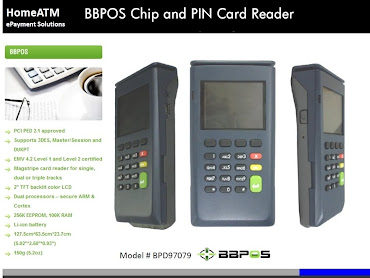In the ongoing quest to lower Interchange Fees, some small US biz owners have banded together to lobby for lower card fees. Here's a story from today's NY Times regarding the fight:
Small-Business Owners Lobby to Cut Credit Card Fees - NYTimes.com
Small-Business Owners Lobby to Cut Credit Card Fees
By JANE BIRNBAUM
Small merchants have long chafed at the fees they must pay banks every time a customer swipes a debit or credit card. But now, with business slowing and every dollar important to their bottom line, some merchants are pushing for changes.
The merchants are lobbying for legislation that would compel banks to negotiate fees with them and are supporting a second measure that one of its sponsors calls a “credit card bill of rights for merchants.” At the same time, some merchants are seeking class-action status for litigation claiming antitrust violations by banks and the MasterCard and Visa card networks.
Alan L. Carsrud, professor of management and entrepreneurship at Florida International University in Miami, said small-store owners have little choice but to accept the cards. “If a mom-and-pop merchant doesn’t like paying them, it can’t just stop taking cards — it would bleed customers because Americans have been socialized to use plastic,” he said.
“Although all merchants are facing real problems about profitability,” he added, “this may be a life-and-death matter for the small ones.”A typical merchant card payment has two parts: an “interchange fee,” which includes an average 1.7 percent of the sale price and a flat per-transaction fee, and a separate fee that goes to the merchant’s bank. Take, for example, a driver who pays for a $1,000 car repair with a credit card. The bank that issued the consumer’s card receives an interchange fee of $17.10 (including a 10-cent flat fee), while the repair shop’s bank gets $4, or four-tenths of 1 percent of the total sale. The repair shop pockets $978.90.
Editor's Note: It's more complicated than that. For example, there's not a "standard fee." ..the repair shop might have a rate of 2.25% and .15 cents or 2.00 and .25 cents... it usually depends on volume, average ticket and their knowledge of Interchange at the time they signed the contract..
In 2007, merchants paid $61.56 billion in electronic payment fees, up from $48.58 billion in 2005, according to the Nilson Report, a payment systems industry newsletter. The report estimated that lenders took in 82.5 percent of those dollars.
“What merchants are getting for their money is convenience, risk management and guaranteed payment,” said Denise Dunckel, a spokeswoman for Visa Inc.
Various factors make every interchange fee unique. If the magnetic strip on the consumer’s card does not work and a cashier has to enter its number manually, for example, a higher charge results. If the card “rewards” the consumer with cash back or airline miles, that, too, has a higher charge.
Beyond setting fee schedules, card agreements also reach into merchants’ daily operations. Merchants who take cards are supposed to accept them for purchases of any size. But to protect profits from customers who use plastic for everything — a recent Visa television advertisement campaign humorously suggested that only social malcontents pay with cash — some small merchants break the rule and set minimum amounts for card purchases.
Click Here to Continue Reading the Full Article at the New York Times









0 comments